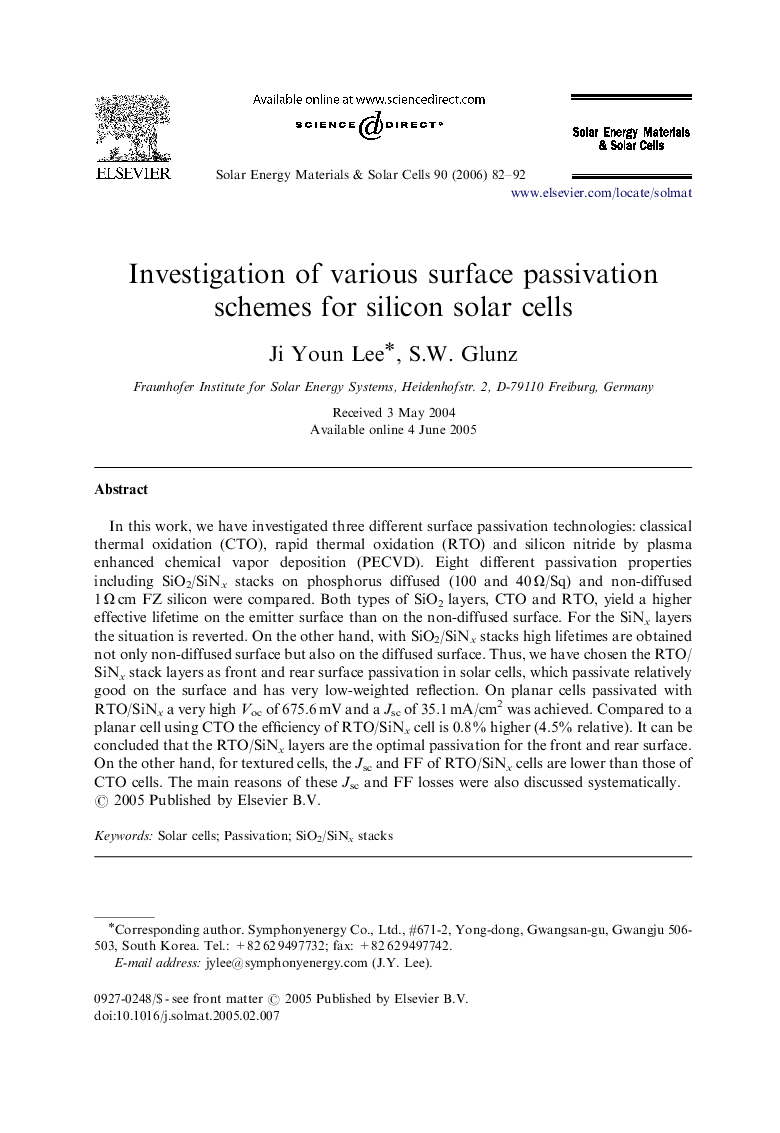| کد مقاله | کد نشریه | سال انتشار | مقاله انگلیسی | نسخه تمام متن |
|---|---|---|---|---|
| 81345 | 49470 | 2006 | 11 صفحه PDF | دانلود رایگان |

In this work, we have investigated three different surface passivation technologies: classical thermal oxidation (CTO), rapid thermal oxidation (RTO) and silicon nitride by plasma enhanced chemical vapor deposition (PECVD). Eight different passivation properties including SiO2/SiNx stacks on phosphorus diffused (100 and 40 Ω/Sq) and non-diffused 1 Ω cm FZ silicon were compared. Both types of SiO2 layers, CTO and RTO, yield a higher effective lifetime on the emitter surface than on the non-diffused surface. For the SiNx layers the situation is reverted. On the other hand, with SiO2/SiNx stacks high lifetimes are obtained not only non-diffused surface but also on the diffused surface. Thus, we have chosen the RTO/SiNx stack layers as front and rear surface passivation in solar cells, which passivate relatively good on the surface and has very low-weighted reflection. On planar cells passivated with RTO/SiNx a very high Voc of 675.6 mV and a Jsc of 35.1 mA/cm2 was achieved. Compared to a planar cell using CTO the efficiency of RTO/SiNx cell is 0.8% higher (4.5% relative). It can be concluded that the RTO/SiNx layers are the optimal passivation for the front and rear surface. On the other hand, for textured cells, the Jsc and FF of RTO/SiNx cells are lower than those of CTO cells. The main reasons of these Jsc and FF losses were also discussed systematically.
Journal: Solar Energy Materials and Solar Cells - Volume 90, Issue 1, 6 January 2006, Pages 82–92